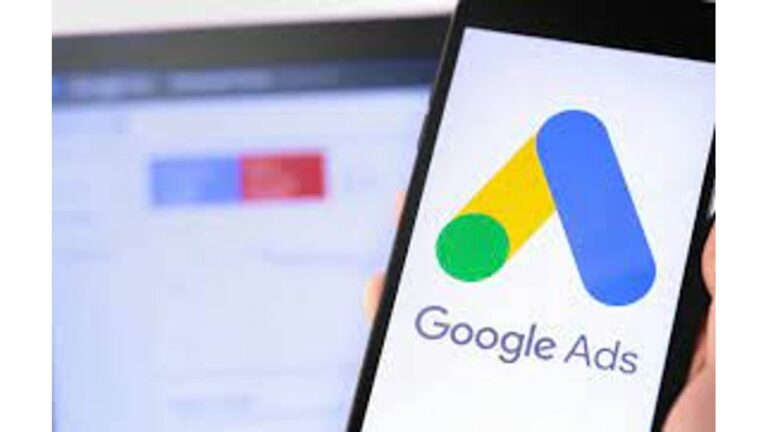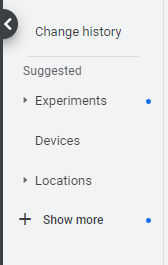
Upgrade to the Google Ads API for even more features
The Google Ads API helps you manage your Google Ads accounts and campaigns at scale. When you migrate from the AdWords API over to the Google Ads API, you’ll get support for even more features like recommendations, Performance Max campaigns, Keyword Planner, and more.
Optimize your campaigns more efficiently
To help you optimize your campaigns at scale, you can now apply recommendations across multiple accounts in the Google Ads API. Recommendations make it easy for you to improve your campaigns’ performance and help you find new opportunities for your business. In fact, advertisers that used recommendations to increase their account-level optimization score by 10 points saw a median 14% increase in conversions.1
Reach more customers where they are
Performance Max campaigns are a new way for you to reach potential customers across YouTube, Display, Search, Discover, Gmail, and Google Maps. They complement keyword-based Search campaigns and use automation to help you grow conversions and value across all of Google’s advertising channels and inventory from a single campaign. We’ve seen advertisers that use Performance Max campaigns in their account see an average increase of 13% total incremental conversions at a similar cost per action.
Read more: Upgrade to the Google Ads API for even more features
Google Ads ditches campaign drafts in updated experiments page
A new experiments workflow is rolling out to select Google Ads accounts, according to reports from numerous PPC professionals. Tip of the hat to Dario from the Marketing O’Clock Discord channel for first spotting this update. Google declined to provide a specific date for when this feature will roll out more widely.
The new Google Ads experiments page. Advertisers that have access to the new experiments page may see the following notice: “The new experiments page allows you to create experiment campaigns without creating a draft, automatically sync changes from your base campaign to your trial campaign, and receive customized reporting based on experiment goals.” Tip of the hat to Brett Bodofsky for sharing the notice on Twitter.
Below are screen captures of the new workflow, courtesy of Greg Finn from Cypress North.

The left-hand navigation has been updated from “Drafts & experiments” to just “Experiments” to reflect the change. Image: Greg Finn.
There are three options: Optimize text ads, video experiment and custom experiment.

Read more: Google Ads ditches campaign drafts in updated experiments page
Google confirms a bug with Google Ads Editor image uploads
Google has confirmed a bug with the most recent version of Google Ads Editor. The issue seems to be with the bulk image ad uploads process. Google is aware of the issue and said the team is working on resolving it.
Confirmation. Ginny Marvin, the Google Ads Liaison, replied on Twitter saying “The team is aware of a recent issue that may be impacting image ad uploads in Editor and is working to address it. Changing versions won’t help in this case. I’ve passed this along and will let you know if I learn anything new.”
No workaround. Google said that reverting to an older version of Google Ads Editor won’t resolve the issue. Google said it has to fix the issue for it to be resolved. So hang tight and be patient or if you really need to upload image ads, then you can try to do so through the web interface or maybe the API.
Google Ads Editor. Google Ads Editor is a desktop program for Windows or Mac that makes managing your Google Ads more efficient. Google Ads Editor is a free, downloadable application for managing your Google Ads campaigns. It allows you to download one or more accounts, make changes offline, then upload the changes back into Google Ads. Google Ads Editor can help you save time and make it easier to make changes in bulk.
But when things do not work, it can be frustrating.
Read more: Google confirms a bug with Google Ads Editor image uploads
3 tactics to improve CTAs for increased relevance and conversions
Calls to action (CTAs) provide customers with a path to follow to achieve their goals, whether that’s completing a purchase or requesting a consultation. Despite being one of the last steps in the customer’s journey, CTAs have gone overlooked as brands adopt a generic approach in this final, crucial solicitation, using messages like “Click here,” “Join now,” and “Read more.”
Creating descriptive CTAs takes time, but it can also signal relevance to search engines, guide your users and improve conversion rates. At SMX Convert, Billie Hyde, senior account manager at The SEO Works, shared several tactics she uses with her own clients to improve the experience for users while furthering business outcomes.
Ditch the generic CTAs
“There are two types of calls to actions . . . subtle calls to action or glaringly obvious,” Hyde said, “These super obvious ones . . . they appear everywhere on the page, so they can be in the meta description or in the actual content or on the product description towards the end.”
CTAs often serve as anchor text, but generic wording may downplay the relevance of the link for users as well as search engines. Hyde recommends that marketers go beyond these bland CTAs to provide more value.

Use your CTAs to strengthen the user journey
Your CTAs should be leading users across your pages, educating them about your offerings while nudging them along the journey you’ve designed for them. More subtle, specific CTAs are better suited for this purpose, as they allow you to suggest alternatives (if a product is unavailable) or simply add more touchpoints to build trust.
“Not what you are looking for? Why not browse our collection of colorful prints to add some color and art to your house,” was one example Hyde provided for situations when a user might leave because they’re not able to find what they were looking for.
Prioritize differently-abled users
Sites are typically designed on desktop, for abled users. Search engines, like Google, have incentivized improving the mobile experience through algorithm updates like the mobile-friendly update. However, no such ranking boosts exist for sites that are designed with visually impaired users in mind.
“In 2020, there were over 2 billion sales made online, and according to Practical Ecommerce, around 3% of all online shoppers use a screen reader,” Hyde said, “So that means an estimated 60 million online sales last year were made by people who have visual impairments.”
Read more: 3 tactics to improve CTAs for increased relevance and conversions
3 tactics to improve CTAs for increased relevance and conversions
Google says it values all local reviews, both positive and negative